

While it's just as important to have serious discussions about the future of architecture, so is taking a hard, honest look at its present state. And if the letters from the recently concluded "Dear Architecture" competition indicate anything about how individual architects perceive the field right now, things are looking bleak.
Organized by Blank Space, the competition invited entrants to write an approximately 500-word letter addressed to Architecture, whether as a concept, a social practice, or a community. The 12 Honorable Mention entries, although written as seemingly fictional anecdotes, consistently expressed feelings of disconnection with architecture — topped with a melancholic tone that is just yearning for the better.
Read the 12 Honorable Mentions in their entirety (listed in no particular ranking):
1. Aditya Ghosh
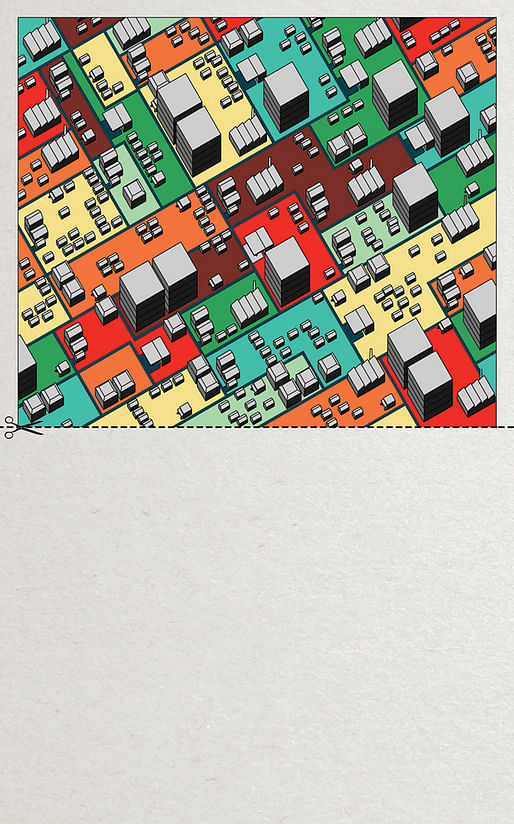
"Dear Architecture,
It’s paper, exactly 9 inches wide and 15 inches high. It’s two dimensional, flat and featureless. A shade of white that is incapable of any expression other than vague serenity. It is this white which will spark human imagination. People will ink the endless white to rein it in. They will recreate memories with drawing and color. They will capture their surroundings and will communicate using it. And paper will become your inception. You will be born again and again as lines. You will be defined by shade and shadow. Colored and rendered to depict how you work, where you sit and what you control.
Take two of the corners and fold them over to meet the other two, create a horizontal crease running right through the middle, and you have created an edge. A new plane perpendicular to the one that existed before, and together, these two planes say so much more than just a moment ago. And you will do just that, create planes that enclose spaces, climb and burrow, explore the dimension that paper can only see, not go to. The sun will bestow your shadows. Your voids will have a darkness that even the darkest colors could never achieve. Your lines will be concrete, your footing set in stone.
Then one day, you will be free of paper. Humans will create you in ether. Impatient and restless, they will start from a volume, not a line, and sculpt you out of molds. They will build and multiply at a speed unheard of. You will be born from the hands of men who will never see your material reality. PaInted with metal and glass, your whole life will be planned on a screen, from concept to demolition. It will be a time when you will be a commodity, disposable, just like everything else in the world.
You will evolve; you will change in ways that no one can foresee. And you will feel lost. You will miss relating to nature, you will regret your lack of identity. But as you read this, you will trace your beginnings to a drawing, a front and back, a two-dimensional expression drawn on paper and sculpted from it and in that germination hides your heritage. So take me in your hands and draw a line on me, make a fold or cut me into two, and you will have you.
Yours,
Paper"
2. Aimilios Davlantis Lo and Celine Park
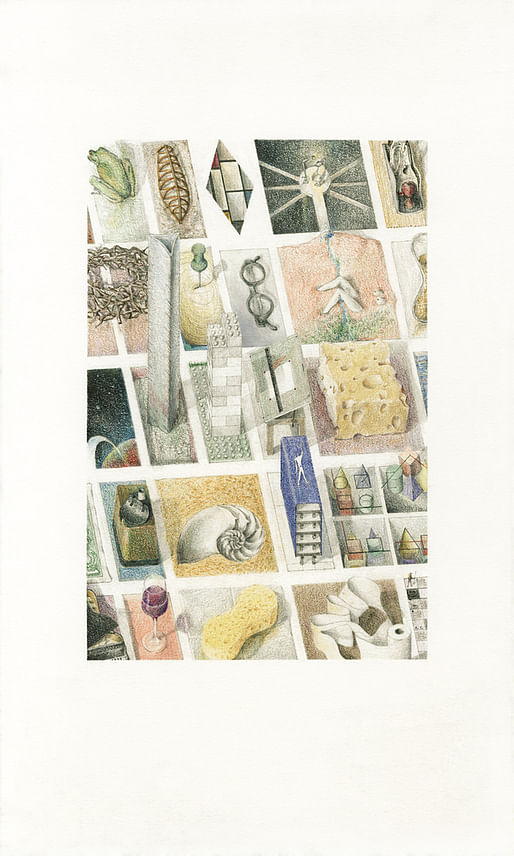
"Dear Architecture,
Excerpts from the layman’s architectural tour:
"I don’t get it.”
“Wow, come see the view.”
“Dude, it says push not pull.”
“I can’t even see my food in here.”
“Where is the bathroom?”
“What a depressing place.”
“Oh thank god for air-conditioning.”
“It kind of looks like Swiss cheese.”
“Where is the elevator? It’s been forever.”
“I like it.”
It really does seem like the public knows nothing of the finer points of architecture. But it is exactly such unsolicited comments said to no one in particular that truly critique it. Small grievances, ripples of excitement, the satisfaction of desires met, decide for public if architecture is good, if they like it, if they care about, if it will change the way they see things. That is, the better the feelings, the better the architecture.
Yet we seem to have difficulty incorporating emotion into our discourse. We avoid talking about how buildings feel because “the sensation is different for everyone”, because “we can’t quantify it”, because “it’s difficult”.
And it is.
So instead we are talking about what creates feelings, relationships in space. And if absolutely necessary, we replace an emotion we had with something more generic, like “interesting”: gosh the way the space opens up is so interesting, wow the light in this room is so interesting, what an interesting aesthetic for this drawing. “Interesting” was once a way to say that a space meant something, was unique and special, and has since become possibly the emptiest word in all of architectural critique. Imagine “interesting” was not a word. Imagine we had instead said: the way the space opens up makes me feel lighter, the light in this room is damp and dark and I feel calmer, the aesthetic of this drawing evokes for me a feeling of vigor and whimsy.
It’s true, the architect’s predictions are probably not on point, and everyone will likely disagree about the quality of a given space. But architecture, in the end, is meant to evoke a reaction, to incite happiness or anger or comfort or awe. Discussing space without talking about the resulting emotions is like hiding the finish line of a maze. Emotion is elusive, nuanced, and personal; but if we can put aside our need to be accurate, emotion can be an opportunity to enrich our conversation.
The truth is that architecture is terrifically powerful. It pulls at the heartstrings and changes people. Not just professionals in the field, but everyone. In order to better create such passionate architecture, we need reach out to our public; we need them to care deeply and immensely. Perhaps it is time to ponder what really effects people.
Architecture, let’s talk about our feelings.
Sincerely,
Sensitive"
3. Alexandre Barrère
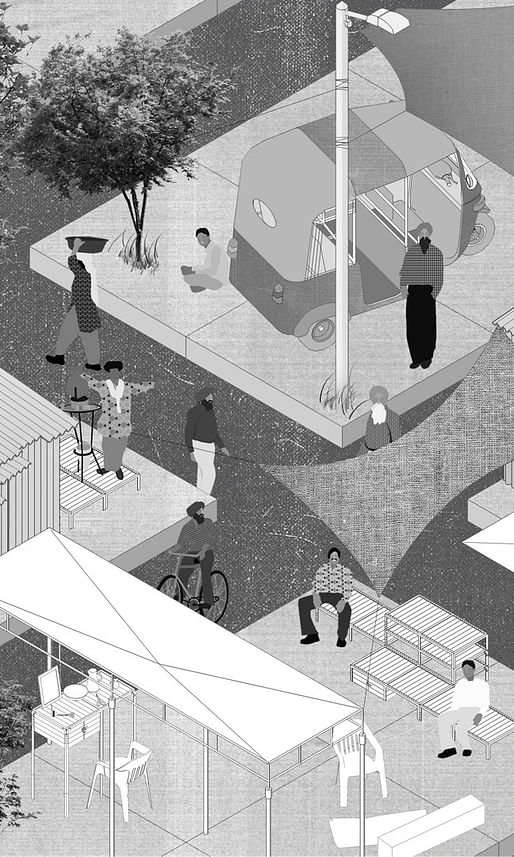
"Dear Architecture,
As if to stick to a common image of rigidness and s eriousness, we often tend to see you as a constraining discipline. A powerful hand showing the route, doubtlessly setting the rules of the living space. And as a matter of fact, people immersed in an architectural context have to deal with a pre-established universe, where behaviours and uses are induced. A world designed from above, seeing through bird eyes.
But what if you were not a stiff little finger, helplessly pointing at a precise but invisible point? What if you rather were an open hand? Giving and receiving at the same time. Setting a background, but accepting countless stories.
Le Corbusier came to this image when working on the Indian city of Chandigarh. After having spent his career trying to elaborate a rational architecture, answering to precise needs of “modern men”, separating the city ways, rethinking scales and proportions...Elaborating a fully controlled architecture. It might seem paradoxical that the Swiss architect came to the idea of an open hand, after having tried to design a straight finger architecture.
But, dear architecture, maybe too often we tend to forget this is also part of you. The open hand doesn’t know precisely where to go. It shows both an absence of restrictive given direction and an acceptation of spontaneous interpretations. The open hand is the acceptance of a positive interaction. We live in architectural situations; and architecture lives through its changes, evolutions and alternative interpretations. You induce ways; and you are kept alive by all sorts of unexpected ways.
Dear architecture, this is my heart speaking directly right now. We must let go. We must accept the idea of collective control over things, instead of individual. We must not forget the good you can make through the variations of interpretations in uses and thoughts. We must not forget you cannot really exist in any other way.
Dear architecture, this is my heart speaking directly right now. We must let go. We must accept we are not in control individually, but collectively. We must not forget the good you can make through the variations of interpretations in uses and thoughts. We must not forget you cannot really exist in any other way.
Remember you are not a fist, nor a stiff finger; but an open hand. Total control is not possible, and this is the best news we could dream of."
4. Arnold Yok Fai Wong

"Doutoku Sakamoto
Gunkanjima Unesuko
Nagasaki, Japan
19th July 2015
Hashima Island
Nagasaki, Japan
"Dear Architecture,
Time engulfs everyone. No one is exception, including you. You were once a thriving coal-mining town in Nagasaki of Japan. Yet, after years of service, I see your aging face, marked with lines of life. People only see your decay, leaving you unattended to your last gasp. But to me, you decay is an more interesting than the seemingly perfect urban fabric, you are my stimuli for imagination. Behind all your scars, there lies such a great history and the traces of faded communities.
The 41st autumn has finally come upon you. You are still standing undauntedly on the island, but your function has faded much. People said it’s time to demolish you. Yet, I know you are not a one-off finished product, rather, the one who demonstrate the city transformation. You have been living with the nature for your entire life. Now you are about to pass away, so let me make you a natural funeral, returning you to the natural sea, in thanking your life-long devotion to our community. If we are to accept that your decay is inevitable, shall we use a less common and probably harder way, to embrace decay from the beginning? And consider you as an evolutionary process instead?
I once read this quote written by Eugène Viollet le Duc in 1855, 'To restore a building is not to repair it, nor to do maintenance nor to rebuild, it is to re-establish i t in an ultimate state that has never existed before.' I envision you as an open-ended architecture, which challenges the tensions between growth and decay. I know what the preservation is trying to do will not save you, they will just blindingly inserting tourist functions to you which is not your true identity. What I am going to create for you, is like prosthesis of the human being, it is a system which will aid you to re-instate you identity in the harvesting of energy again. I name your prosthesis as the Amphibious Machine, as it was inspired by the Amphibians which inhabit a wide range of habitats such as terrestrial and aquatic ecosystems. In a terrestrial mode, the Amphibious Machine is simply a static s tructure that allow the habitation of a community. While in the aquatic mode, the machine will become dynamic that it could floats according to the wave motions with its built-in mechanism, thus, mitigate threats caused by sea level rise while harvest wave energy from it.
My goal in saving you is threefold, first is to preserve and reinforce you identity, the second is to establish you as a self-sustaining island. The third and probably the most important one is, to embrace your natural process of decay, by making you as a metamorphic process that encourages continuation of you identity and functionality. It does matter where people will inhabit in you or not, but most importantly, is to continue your identity, productivity in the realm.
Your ruin is never a shame. I hope my prosthesis can enrich your life to a meaningful satisfaction.
Yours Sincerely,
Doutoku Sakamoto"
5. Chriscelle Banas and Noel Vazquez

"Dear Architecture,
Greetings from the Pyramids of Pomona! Oh, you're not familiar with the Pyramids of Pomona? Located in the city of Pomona, between the San Gabriel Valley and the Inland Empire, in the parking lot of a hardware retailer, a defunct toy store, and an abandoned electronics retailer off of Garey Avenue and Towne Avenue, the Pyramids of Pomona attract an average of 3.5 undocumented visitors a day and generate a monthly revenue of -$35, the cost of three 36” helium-filled balloons, some fishing line, and several spools of red yarn.
The last postcard I remember receiving from you was from when you visited the Arc de Triomphe. Or maybe it was that custom (Costco-made) postcard of you in front of the Villa Savoye in Poissy. As much as I appreciate your thoughtfulness and constant reminders of your whereabouts, I just want you to know, and I mean this in the friendliest of ways—I get it. I no longer need to be reminded of how architecturally significant all of these postcard places are. It’s not that I no longer want to know of your whereabouts, it’s just that it would be nice if you cared about my whereabouts.
The postcard adheres to the following formula: a photograph of an architecturally significant monument on one side, some Eurocentric scribbles on the other side, and a variety of postage stamps on both sides to provide some validity to the traveled nature of the postcard. But why is it that the postcard is only sent from places that are obviously architecturally significant and not the places that go without regard? What will it take for you to recognize those postcard rejects? The immediate answer lies in a temporary, or rather, an instant solution—the instant monument. The monument adheres to the following formula: scalar oddity and familiarity. The instant monument also adheres to the same formula, except the instant monument models the outline of a familiar monument, making its faint physical linework just familiar enough to be recognized and its scale just odd enough to be of scalar oddity. The instant monument is my way of asking for your recognition, despite your snootiness and disregard.
The Pyramids of Pomona are an instant monument celebrat ing the obscurities, banalities, and other miscellaneous quirks unique to Pomona that make it architecturally significant to those who are familiar with those obscurities, banalities, and quirks. It represents all of the other architectural insignificants with similar qualities.
So with this postcard, I just wanted to let you know of my whereabouts. Wish you were here.
Sincerely,
Your friend"
6. Ekaterina Dovjenko
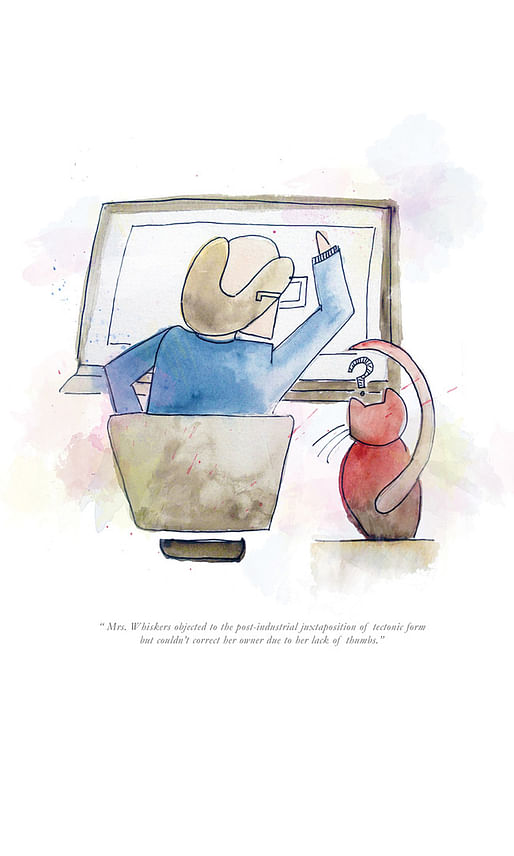
"Dear Architecture,
Are you still there? Even after all these years? I hunch over my drafting table—back aching, my hand, shaking, grasping a pencil—and think of you.
My study is bathed in a golden haze. It’s late and Mrs. Whiskers paws at me, beckoning for bed. But I always work better at night, and this particular summer evening is no exception. I still feel the mad rush taking hold. Infinite to finite, ideas in my head take the forms of arches and columns, vistas and walls. Structure winds its way behind the simple lines of my pencil. That’s all they are after all: simple lines that can change the world.
And so I think back to when you and I first met. Was it in college? No, much earlier. It must have been building sand castles at the beach. The sand was rocky then, filled with ocean glass and oily sea froth. Perhaps it’s silly, but I knew we’d be great friends.
Oh Architecture! You delirious mistress! Fast forward a few years and I found myself hunched over a desk much like I am now. But unlike now, a cold shower of doubt poured over me. No one told me I would have to sell you to critics! I never expected you to be so fickle! One day I am creating beauty; the next, it’s garbage. You had so many sides that I struggled to keep up: Modern, post-modern, biophilic, art nouveau, technophilic, parametric.... The list goes on. Who were you?! Everything was much clearer with sand castles.
But somehow I managed and then even flourished. We dashed hand-in-hand from client meetings to award ceremonies. We made it, baby! I pretended to master the unmasterable and to teach the unteachable. And so, for many years I thought I could control you while you spun and changed in front of me. I grew confident, then weary, and finally jaded. “Architecture is dead!” I even proclaimed.
One early spring morning, I stood on the sidewalk near the bustling train station. People hurried past me, some stopping to stare at the elderly man beside the taped-off brutalist building. It was one of my early works: a vast and unforgiving structure with swaths of concrete and dots for windows. That day, I saw it tumble to the ground, first keeling over like it was hit in the gut before collapsing into millions of pieces. That day, all my thoughts, dreams and plans amounted to dust and gnarled metal.
Architecture, I could not control you. Heck, you can’t even control yourself! And as we move from medium to medium towards an age where computers dream and the architect becomes the coder, I’m still baffled. But perhaps we shouldn’t worry and just let you go, wherever that may lead.
I lean back in my chair with a timid smile. On the paper in front of me are simple lines. Isn’t that all they are after all? Simple lines that can change the world.
Love always,
Your Old Admirer."
7. Giovanni Bellotti and Giacomo Sarto Favorito

"Dear Architecture,
There's nothing like a room that's all yours. Four walls or more, a window and a door, canvas-white and waiting to be etched. The things you put within it, from a matted Ikea rug to a tattered leather armchair, exist together in a kind of comfortable stasis — one that can easily be assembled or reassembled, before being disassembled once again. Never the same but always familiar, expanding in bursts and resting for pauses, but continually growing nonetheless. If you're anything like me — a sort of twenty-first century house-to-house nomad, oscillating between settling, unsettling and resettling — this might mean something to you.
The act of moving serves as a good way of condensing the scope of what you own. You accumulate more than you realise during a six or twelve month stay. A Tapiovaara chair that was sat at the side of the road for scrap, scooped up and lovingly sanded, cardboard tubes, bicycle wheels, postcards and prints. Oh, and books. Books, which more than anything else remind me of a moment in time or of a specific place. Happy finds in hidden bookshops, travel guides and phrase books; the “I-saw-this-and-thought-of-you” interlaced with the mass-online-purchase.
Ownership, as Walter Benjamin said, is the most intimate relationship that one can have to objects. Even Bruce Chatwin, a true nomad, accepted that he’d eventually need a place to hang his hat. His London rooms were crafted and minimally furnished by a young John Pawson, who fulfilled the brief to a tee. But nothing could abate Chatwin's appetite for an extravagant Regency couch which, in a flash, became the centrepiece in his otherwise sparse Belgravia apartment.
Sometimes provenance is irrelevant and it’s the thing alone which holds meaning. Worn fabric on the seat of a chair or smudged pencil marks on a table top reveal traces of use, just as the objects of the room delineate outlines of inhabitation. Amid the lived-in mess, there’s a joy in carefully composing items on a shelf. Arranging books by size, colour or author, for instance, is at odds with the complex arena of ordered disorder that each lived-in room inevitably becomes.
Perhaps the sequence of spaces that we inhabit define us less than what we actually migrate between them. Although where and how we choose to dwell inevitably shapes the way we live, it’s the curated collection of objects and furnishings that we take with us. They furrow a place inside our inner-nest, reminding us that living in a state of flux is no bad thing.
Yours,"
8. Nicholas Venezia

"Dear architecture,
I had a roommate in college, a beautiful hulk of a man. Invincible. One day he fell asleep at the wheel of his crappy Saturn and hit an oncoming eighteen wheeler. It was my first experience with the impermanence of our relationships. Most of us inherit a frightfully deceptive expectation that we’ll be alive for nearly eighty years. That expectation won’t keep a car from crushing under the pressure of a truck, but it will make it more painful to lose the young driver.
Dear architecture,
You are the most powerful representation of ourselves, our values, and our mortality. We impose our fears and expectations on you. Like our children, we expect you to outlive us.
But dear architecture,
You are a manifestation of circumstances outside of your control. Despite the resources through which you are conceived, the weight of your materials, and the exactitude of your execution, you are not permanent. You are at the mercy of cyclical economies, symbolic construction do-overs, the eternal promise of more value-per-square- foot.
There is retribution for this impermanence; it intensifies the limitless variation of our experiences with you. We carry a lifetime of memories, the daily whims of a thousand relationships, and a diverse capacity for spatial, spiritual awareness. Adding the underlying awareness of your ephemerality escalates the individuality of these experiences. There can be no single interpretation of your successes and failures, only a chaotic cloud of accumulated opinions that grows exponentially and e volves forever until the day you fall, one that anyone can contribute to if they so choose.
Dear architects,
Go see architecture. Spend time in it. Communicate your response to the rest of us. Access your emotions. Get them down on paper. Articulate why this architecture is better than that architecture. When it must be altered or replaced, your contribution to the chaotic cloud will be invaluable. Otherwise we will rely on someone ’s crappy photographs. We'll speak with vague phrases like 'sense of history' and 'urban fabric'. We'll talk about moral obligation rather than emotional attachment, when moral obligation isn't how we hold on to things in this culture. We bulldoze, conquer, and erect anew to erase scars.
People don't destroy buildings they love, but they do destroy buildings that architects love. It's time we accept the fragility of our lives and our buildings, to communicate why they mean so much in the moments they exist. We can't tell buildings why we love them, but we can tell each other why we love them.
The last time I spoke with my roommate, I happened to tell him that I loved him. After years of pain, this brings me comfort. The last time I visited the American Folk Art Museum, I sketched its facade and sent it to Tod and Billie. This brings me a similar comfort. It won’t bring back the building, but at least it’s out there."
9. Petar Bojović
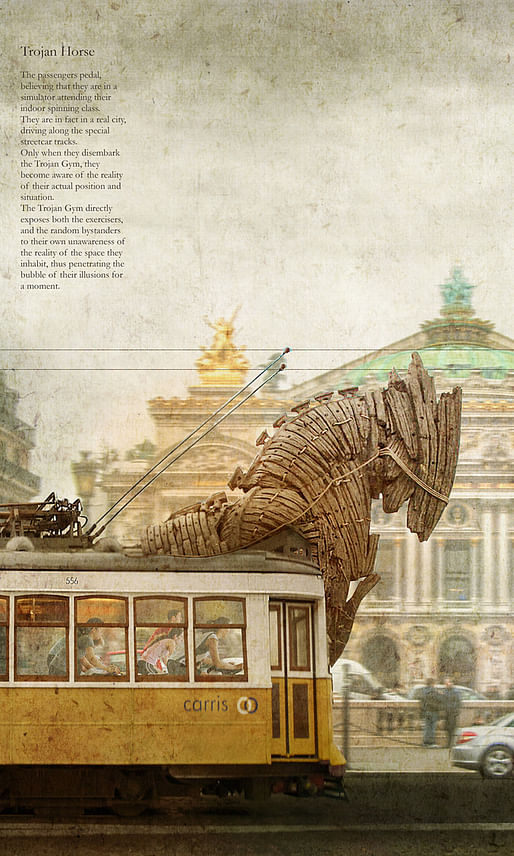
"Dear Architecture,
It is a bit strange to address you this way. It is as if I’m writing to Santa. In fact, both of you have a similar problem: your narratives get weaker every year due to the global commercialization of everything. The flesh of your once consistent body is being eaten away and apportioned into small pieces.
Coke-Santa and Architecture. Even though you have found yourselves in the same predicament, there is a big difference between the two of you. Santa has his believers, and at least he exists through them. You, however, need the real material world in order to exist, because no one believes religiously in Architecture. Now, this still isn’t the actual core of your predicament. If I may, I would suggest that the real problem lies in Reality itself; or to be more precise, in the increasing lack thereof.
Your substance can be appreciated only if it is real. But if nothing is real, or if everything is more real than real, then 'just real', which is your current state of affairs, simply won’t cut it. It is not enough in this world. We are living hidden behind the countless layers of user names, profiles, and images, which we use as prosthetic devices to create an illusion that we are connected with the world.
Reality has collapsed under your feet, and now you are drowning in the fragmented abyss of its absence. Your main target-group are the architects, your sales pitch is way too long to make any sense, and when you try to convey yourself only through images, you are in fact helping the axeman to finish his job.
So, what should you do, my dearest Architecture? I say, crash the party and be whatever and whoever you need to be: ephemeral, eternal, digital, analogue, green, low-cost, highly-efficient, sustainable, economical, economically viable, parametric, eye-catching, intellectual, stylish, raw, futuristic, eclectic, slick, sharp, with the 3% of the monthly rent reserved for the return on the initial investment, easy for maintenance, silent, flexible, self-sufficient, handmade, prefabricated, double-faced, consistent, baroque, and post-prefabricated!
Appear when and where you’re least expected. Use your fragmented nature to your advantage. Act like a trojan horse virus, and penetrate the bubble of our illusions, to expose the truth. Then, make your real presence appear more real than real. After that, who knows? Maybe, once you restore the reality of the space we live in, Real might stand a chance of becoming real again. Someone once said, 'If war is not real, then nothing is real'. I say to you: if Architecture is not real, then nothing can be real. So be real. Do what you can to get there.
Yours truthfully,
30376"
10. Seth McDowell
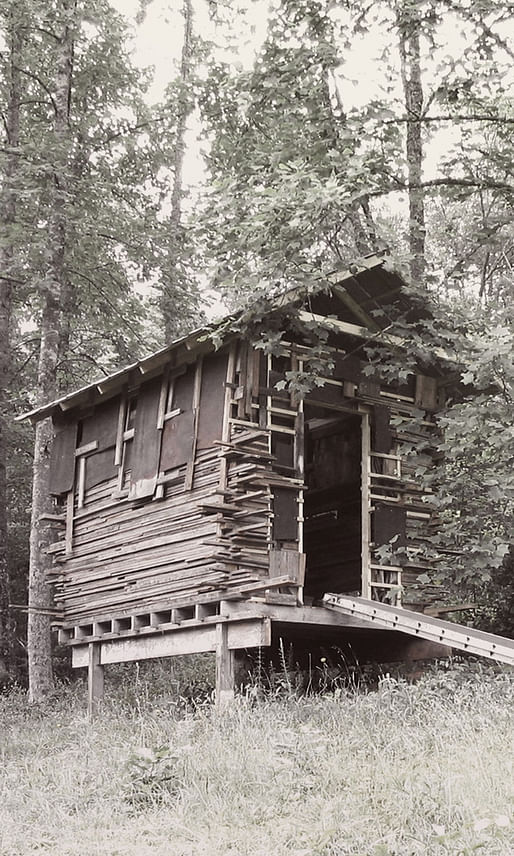
"Dear Architecture,
Close your eyes. Do not flip through the glossy spreads of El Croquis. Do not search Google. Put a bag over your head and become blissfully ignorant. This is the only way to remain authentic. This is the only way to maintain some resemblance of relevance. PLEASE EMBRACE THE EXCEPTION RATHER THAN THE GENERAL.
Architecture—you are a victim of globalization. You look the same in China as you do in Alabama. You have mastered the game of imitation. You have mastered the game of importation. You have joined in the homogenous mission and I now struggle to decipher any appearance of cultural identity.
I beg you, architecture, to stop! I beg you to clo se your browser. I beg you to discontinue your subscription. I beg you to remove yourself from the oversaturated information age. Instead, look no further for inspiration than the shadow you cast.
Perhaps if you remove yourself from the global distribution and consumption system you will encounter an invigorating level of originality. You will become Mr. Unfindable Architecture. There will be no Google entry for Mr. Unfindable Architecture. There will be no Pinterest board for Mr.Unfindable Architecture. Mr.Unfindable Architecture is the exception, the special occurrence, the outlier.
Architecture—you will become the exception to 'the building.' You will be the manifestation of a particular person, culture or time and not merely the regurgitation of general, generic practices and principles. You will establish yourself as the anomaly.
Architecture—you cannot solve the urgent matters of the world—you have your limitations. It is in your nature to create more problems than you can so lve. Your value lies in the ability to offer difference within a homogeneous context. My hope is that Mr. Unfindable Architecture will accept this responsibility and work to celebrate the condition of the exception as a rare moment of authenticity.
I sincerely hope you will accept my challenge Architecture. I hope you will ignore trends and avoid clichés. I hope you will re-emerge as an unconscio us, stunningly unique hero. I cannot wait to meet you Mr. Unfindable.
Yours truly,
The ‘Pataphysician"
11. Shane Reiner-Roth and Kyle Branchesi

"Dear Architecture,
I write this to inform you that you're stuck. Or, rather, that you appear to be stuck. You must feel painted into your own corner, and perha ps we're to blame. Because you're so assuredly sunk in the ground, with your plumbing twisted in a knot; because heaven forbid the moment you're confusing you might cause some missed flights; because every component of your being is ossified, codified, and standardized by things you've never even heard of.
You're nothing more now than a mailbox for the mail man, a quick buck for the toupéed , and storage for the rest. What used to be your best qualities have been systematically targeted to fade away, and the only thing that remains is a private way of thinking about you: wistfully, in the past, and no longer now.
The purpose of this letter is to ask you a question: have you considered the benefits of becoming upside-down? It could turn your whole life around.
Before I sell you on the concept, you should know what becoming upside-down involves: your chimneys squirm in rotation, the depths of your awnings approach zero to gain mass on the other side, your windows push and squeak past each other for a spot in the limelight, and your roofs multiply infinitesimally to clear a path for clean slates.
Your initial resistance towards loosening up would be understandable. After all, the act is not about satisfying any stylistic concern, and it’s certainly not about the proper relationship between anything and anything else. From your end, this must sound unpleasant, and like a rather intense exercise.
But you have to remember that this is not the first time your motives have been undermined. In your experience, each new obstacle has birthed a uniquely in domitable solution. Right now you might feel safe with all the codes and regulations, but I think you'll come to prefer the sway of unchartered waters in due time.
Becoming upside-down is a great opportunity to have your eaves and treads newly considered; to forcibly push your best qualities back to the center of conversation. While your elements churn and do whatever else they may, they'll grind to a halt at each moment to be read for the readers. In the odyssey from double doors to single chimney, for instance - a monumental task by anyone’s measure - you’ll soon regain the audience you had lost for longer than we can both recall.
I grew up believing that Architecture is everything, but now I’d like to see you prove it. With your commitment, you could be the one at long last to recede into the bending landscape and over the horizon line. Why should it not be your turn to escape geometry by a fugitive mobility?
I implore you to consider the many benefits of becoming upside-down; and given the contemplative solitude you're afforded while tied to the ground, I'll permit you some time to sleep on it.
Till then,
Your confidant"
12. Will Fu
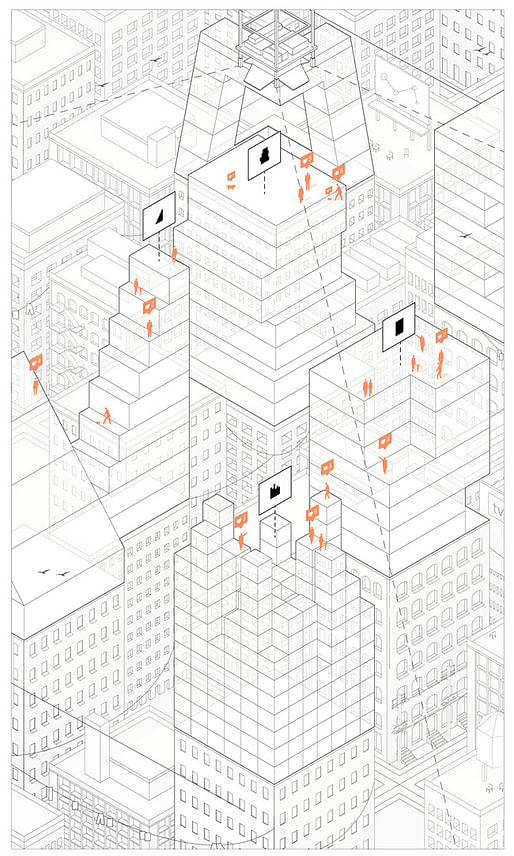
"Dear Architecture,
Stop with the constant selfies please.
I remember a time I had to pick my ass up to see you, but now, all I need is a phone, my favorite architecture website and your there, in my hands, showing me the goods. You look more fine than ever, railings removed, gleaming white, twisting and turning to shade from the sun. Just gorgeous.
I mean, now that you’re here in this virtual library, is there any sense to meet up, I’m already seeing you the best you possible could be; airbrushed to perfection, edited with the most delicate tweaks to show those phenomenal moments inhabited by a good looking woman that’s always looking up and away so you can’t tell she’s too good looking but deep down you know she’s good looking. With technology these days I have all the selection. There are tons of material to scan through, with new pictures screaming for shares and attention, in every category from Adaptive reuse to zoo.
Rather than the journey it’s more than ever about the time of capture. The end images, frozen in virtual space, floats from device to device, shared, and liked. The public discourse has shifted from the pens of architect into the mainstream pixels of the inter-webs. We double tap our screens, eyes scroll quickly, comment, giving quick little hearts.
Projects ingest this digital attention; using an international acknowledgement of space making to fuel individual willfulness, global recognition, and layering contributions to uniqueness. These international cities generate from banality, custom skylines capp ed off with odd shapes, height, and constant propaganda. From the international style, other than a scattering of glass box architecture, a new visual based architecture defined by branding, and signature forms populate contemporary metropolises. Whether it is a twisting tower, a stacked tower, or a glass box, the power relationship is still imminent and unchanged. A sensuous exterior surface distracts the public, enticing photo documentation, while the interior remains typical; the same repeating floors, layout, and activity. The public is out and about, immersed and sedated in a field of fantastic formal manipulations and ornamentation and the private is in. No cleaner can this divide be made clear.
I just wished you could be open; more vocal, more social about how you should be felt, not just seen. In a society so visually dependent, you have the potential to clear the air and offer us a breath of fresh air. You need to look within, and take a stance, rather than compete impulsively for virtual pixel hearts and thumbs for being curvier, sharper, or taller. These senseless quick bursts of happiness will have no long term relevance in a fast paced society. We need you to be socially conscious, context sensitive, for all. An architecture not defined by an icon, the number of likes, or a single image, but an architecture celebrated through habitation, memories, and true physical presence.
Sorry for rant,
From Devote arch lover."
Can you relate to any of the letters? Do you agree with them? Voice your thoughts in the comments.
You can also read the top three winning letters here.
No Comments
Block this user
Are you sure you want to block this user and hide all related comments throughout the site?
Archinect
This is your first comment on Archinect. Your comment will be visible once approved.